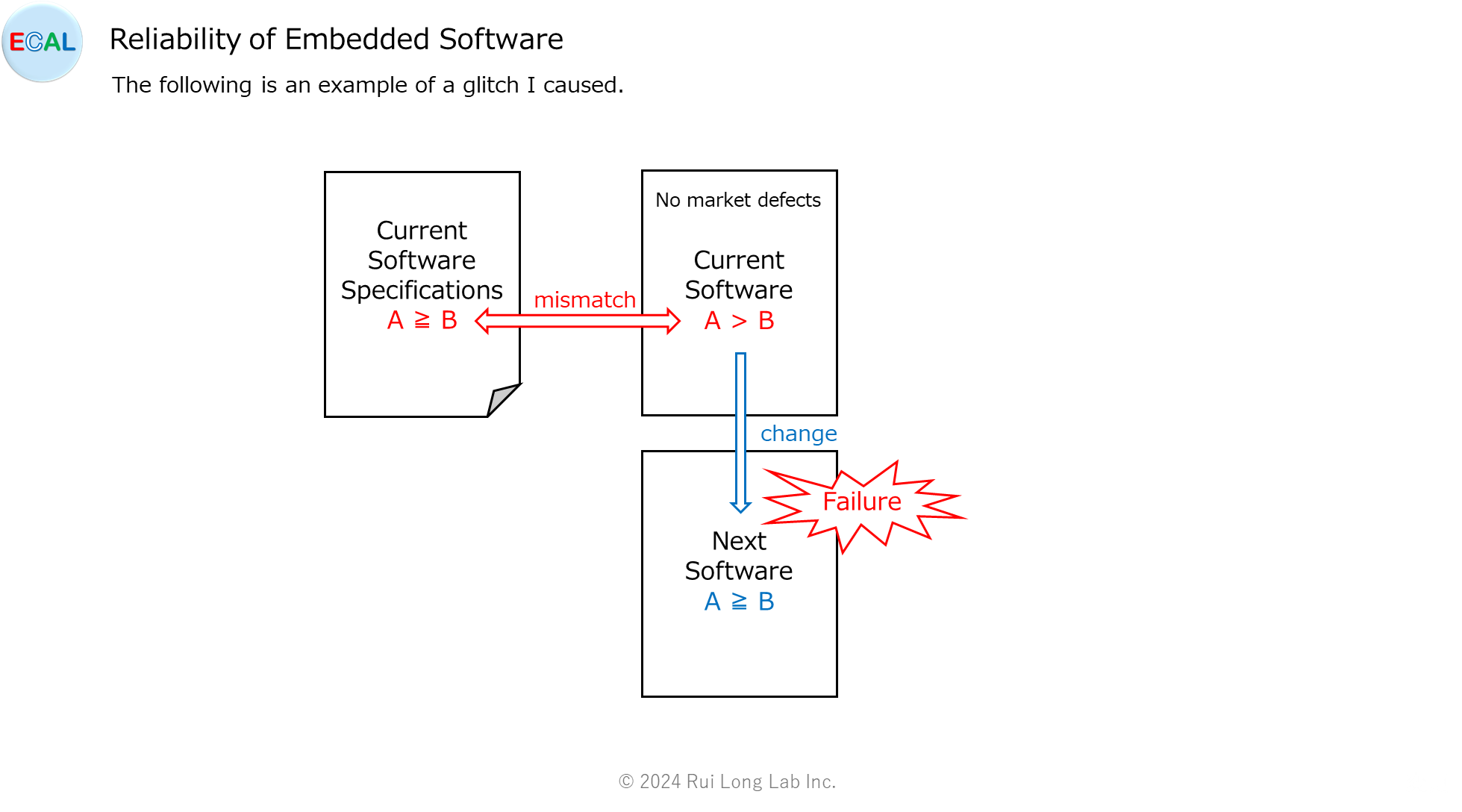This post describes the reliability of embedded software.
Embedded products may be subjected to harsh operating environments or have a long durability period. Embedded software is only released to the market after sufficient verification to ensure reliability. However, not all situations that occur in the market can be tested. For example, even if there are no defects after a 30-day long operation test, defects may occur when 10,000 units are operated x 1 day in the market. Therefore, the most reliable embedded software is the one that has operated without defects in the market for a long period of time.
When changing from software that has built up reliability in the marketplace, be sure to design and verify the software thoroughly.
The following is an example of a glitch I caused.
During the development of the next version of software, we found differences between the software and software specifications for the current product, so we changed the next version of software to match the software specifications, which resulted in defects.
In this case, the software specification should have been revised or the specification should have been redesigned and fully validated.

